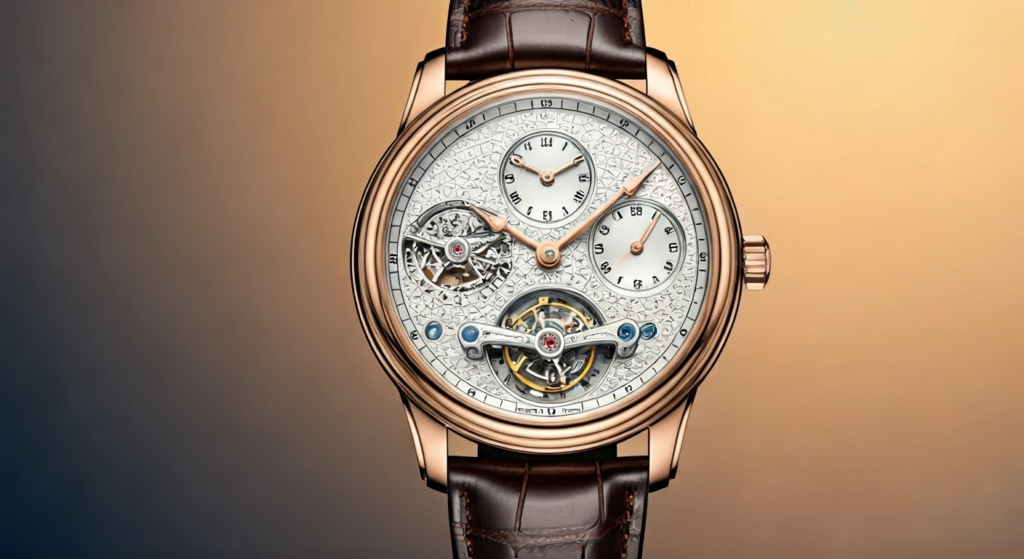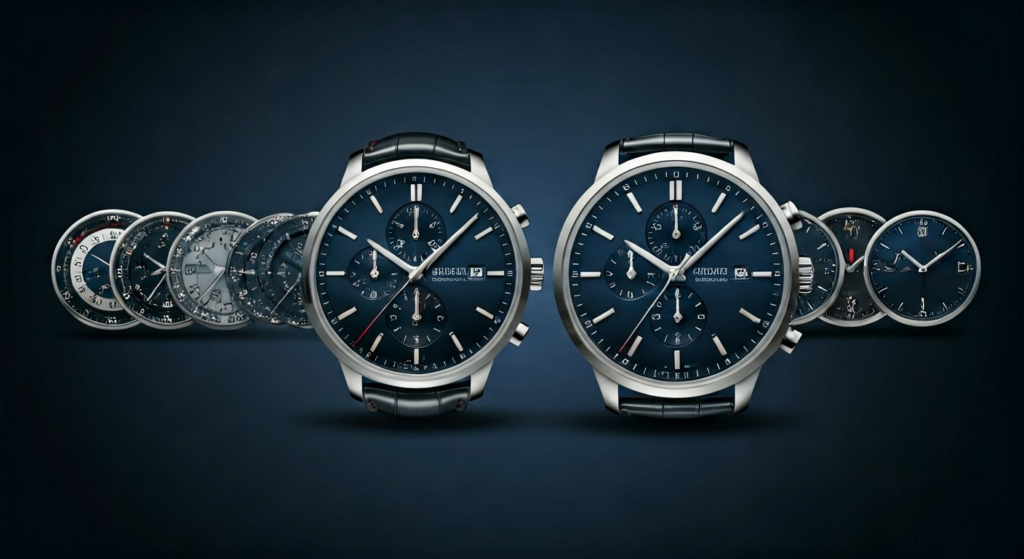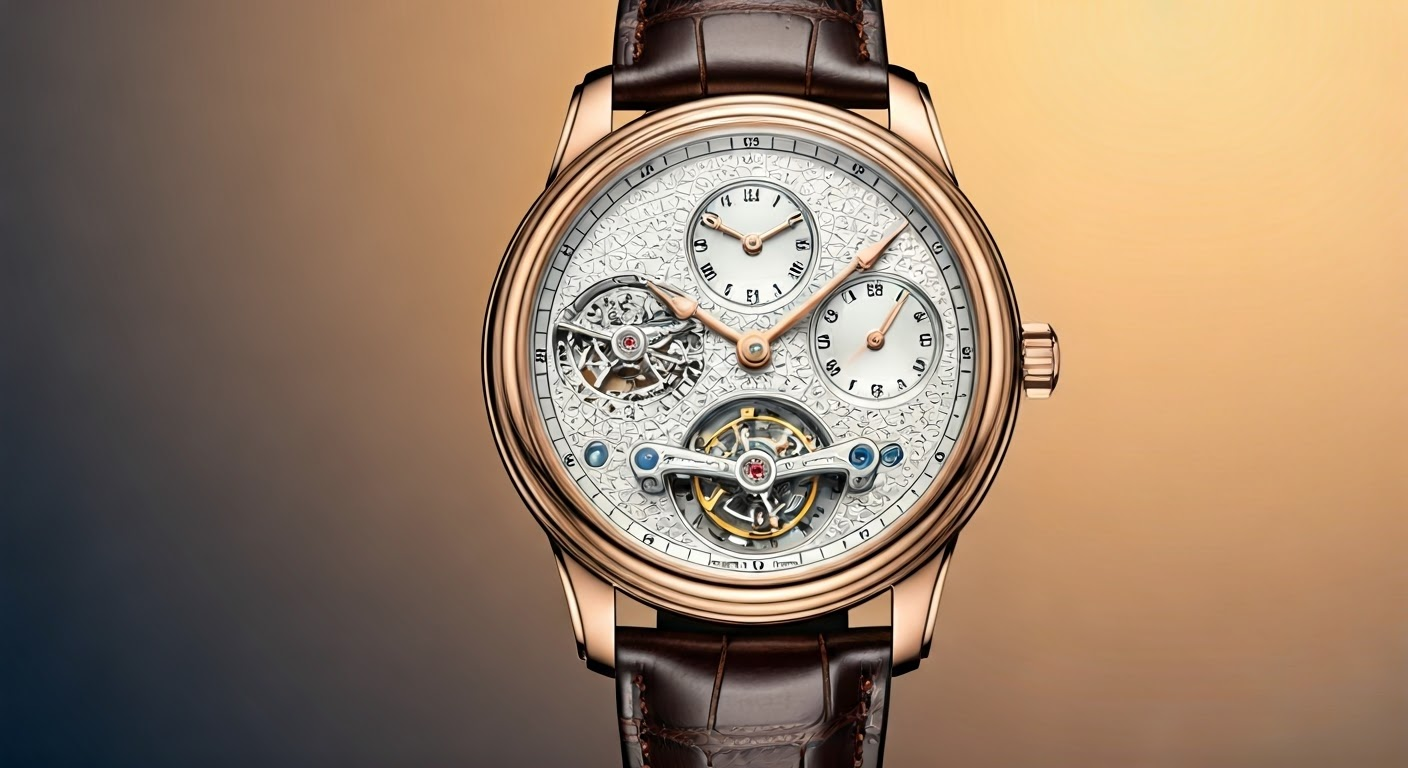What Is a Watch Complication? Your Complete Guide

Key Highlights
- Unlock the world beyond simple time-telling with watch complications – features that go beyond just displaying hours, minutes, and seconds.
- From practical chronographs for precise timekeeping to elegant moon phase displays and intricate perpetual calendars, complications vary in complexity and purpose.
- This comprehensive guide explores popular categories such as chronographs, GMT complications, calendars, and more.
- Learn about the mechanics, history, and significance of various complications.
- Discover how these intricate mechanisms not only enhance functionality but also elevate the artistry and value of a timepiece.
In horology, a “watch complication” means any additional function a wristwatch has besides just showing the time. These are more than just complex parts. Watch complications show a great mix of skill and art, requiring a number of additional elements for their operation. They turn a simple timekeeping device into a small wonder that reflects the beauty of precise engineering.
Basics of Watch Complications

Imagine a watch dial as more than just a face. Think of it as a canvas. Complications add special details, like displaying the current date, that make the watch look good and work well, similar to the small indented button on the side of the case. A complication involves complex mechanisms built into the watch’s movement, which is what tells time.
From simple date displays to advanced chronographs and astronomical features, each complication requires skilled craftsmanship. These small gears, levers, and springs work together with the main timekeeping parts: the escapement, balance wheel, mainspring, and watch positions to counteract the effects of gravity. This teamwork brings these extra functions to life.
Complications in Watchmaking
Complications are the top level of skill in watchmaking. They show how well a brand knows its craft and its commitment to improving mechanical art. Each complication needs a good grasp of watch principles and the skill to turn complex ideas into small, precise parts.
More than just how they work, complications add personality and story to a watch. A chronograph shows a love for speed and accuracy, while a perpetual calendar shows a value for lasting precision.
For watchmakers, complications show their creativity. They change watches from simple timekeepers into beautiful pieces of art, admired for their mechanical detail and visual appeal.
Watch Complications for Beginners
The world of watch features is very rich and offers something for every fan. Chronographs, including those from Breitling, are popular in many collections and work like stopwatches. Pushers on the watch case allow you to start, stop, and reset the chronograph. This helps you time events accurately.
If you love complex designs, pocket watches with repeaters create a special sound experience. These features ring out the time when you want them to, often initiated by a slider on the side of the case. Minute repeaters can chime hours, quarters, and minutes. It combines technical skill and artistic design in watches.
Perpetual calendars are amazing examples of clever engineering, incorporating the equation of time. They consider leap years and the different lengths of months. This means they show the correct date for many years without you needing to adjust them, unlike an annual calendar which requires manual adjustment. Owning a perpetual calendar is like having a small mechanical sky expert on your wrist.
The Beauty of Timekeeping: Chronograph Complications

The chronograph, often known as a stopwatch, is one of the most popular complications and watch features. It does more than just tell time; it shows how skilled the watchmaker is at measuring exact time intervals. You can start it using buttons on the watch case. This feature allows the wearer to time events very accurately.
This is great for racing fans who want to track lap times or anyone who needs to time a presentation. The chronograph stands out because it combines usefulness with complicated mechanics. The way its hands and small dials move to show seconds, minutes, and even hours is a stunning example of precise watchmaking.
Classic Chronograph Explained
The classic chronograph uses a different mechanism that works with the main timekeeping movement. When you press the start button on the button chronograph, it makes the second hand move. Pressing a second button stops the second hand, letting you measure time spans. The reset button brings the chronograph hand back to zero, so you can use it again for timing.
Chronographs often have subdials to track longer times, including measurements in kilometers and miles. You might see a 30-minute or 60-minute subdial, and some watches even have a 12-hour subdial. This works almost like a separate timekeeping system. The best part is that you can start, stop, and reset the chronograph without affecting the main time display, which makes this feature very useful.
Besides being functional, chronographs are also very attractive. The way the second hand moves across the dial, along with the ticking subdials showing the minutes and hours, makes the watch interesting to look at.
The Intricacies of Split-Seconds Chronographs
For those who want the best in chronograph design, the split-seconds chronograph, or rattrapante, is the top choice. This type of watch has two seconds hands layered on each other. This type of scale lets you measure time in a running event. For example, in a race, you can stop one hand to record a lap time while the other one keeps going to track the total race time.
Another great feature is the flyback function. You often find this in pilot’s watches. It makes timing several intervals easier. Instead of needing to press buttons to stop, reset, and start again, the flyback lets you do all three with just one press. This is very useful in aviation and other situations where you need quick timing.
Using the split-seconds chronograph shows how skilled a watchmaker is. The delicate parts and the need for precise movement of the hands demonstrate the best in watch-making art.
Navigating Through Time Zones: GMT and Dual Time Complications
In our connected world, tracking different major time zones is important for many people. GMT, or Greenwich Mean Time, is the main reference time for keeping time globally. A world time watch allows wearers to see their home time and a second time zone at the same time using GMT features.
Dual time watches work in a similar way. They show two different time zones on the dial. If you travel a lot or need to work with colleagues in different regions, these watches make it easier to manage different time zones.
How GMT Watches Display Multiple Time Zones
GMT watches use a smart way to show different time zones clearly, including a third time zone. Rolex GMT watches have a special GMT hand, which often has a unique look or color. This hand moves around the dial every 24 hours and points to a 24-hour scale. This scale shows all the time zones in the world.
Setting the GMT hand is easy. You simply align it with the current time in your home time zone on the 24-hour scale. This way, the watch can show both times at once. Many GMT watches come with a rotating bezel. This lets you quickly change the main hour hand to the local time while keeping your home time visible on the GMT hand.
This two-way function makes GMT watches really useful for travelers, pilots, and people who connect internationally. It shows how practical and clever fine watchmaking can be.
The Utility of Dual Time Watches for Travelers
Dual time watches provide a simple way to manage different time zones and the world time zone, featuring an outer bezel to enhance functionality. They have two hour hands, with one often being smaller or differently designed. This special setup shows the time in two places at once, making it easy for the wearer to see.
Setting the second time zone is easy. Some watches use a crown or button to move the extra hour hand one hour at a time. Other models connect the second hour hand to the main hour hand, allowing both to change together.
For those who travel a lot, the dual time feature removes the hassle of figuring out time differences. Whether connecting with family or scheduling international calls, dual time watches make everything easier.
Conclusion
In conclusion, understanding watch complications makes the world of watches even more interesting. If you like the accuracy of a chronograph or the helpfulness of GMT functions, each complication shows a unique story about skill and new ideas, much like how sailors have traditionally relied on certain complications for navigation. The beauty of timekeeping is not only in showing the time but in the complex parts that run these complications. So, dive into watch complications, find the one that you like, and boost your timepiece collection. Enjoy the art and usefulness that complications bring to your watch. With each complication, time really turns into a beautiful work of art.
What is the Most Useful Watch Complication?
The best complication for a watch depends on how the wearer lives and what they need, including the day of the week. Some people may find that a simple date display is enough. However, those who travel often might want a GMT or dual time function. In the end, the right complication makes the watch better and meets the wearer’s unique needs.
Can Watch Complications Affect a Watch’s Value?
Yes, complications greatly affect a watch’s value. Complications that collectors really want, such as those with complex mechanisms or made in small numbers, boost a watch’s appeal. This often turns them into valuable investments.
How Do I Choose a Watch with the Right Complications for Me?
Think about your daily life and how you spend your time in Switzerland. If you travel a lot, GMT or dual-time watches are useful. If you need accurate time, a chronograph could be a great choice. Focus on functionality and pick a complication that easily fits into your daily routine.
Are More Complications Always Better?
Not always. Adding more features shows skill in watchmaking, but it also makes the watch harder to care for. Having too many features can make it difficult to read the time. The right number of features really depends on what you like and why you want the watch.
How to Maintain a Watch with Multiple Complications?
Watches that have many features need careful attention. Getting them checked regularly by a skilled watchmaker keeps them working well. Don’t let the watch get too hot or cold, and stay away from strong magnets. Make sure to wind it often to keep the tension of the mainspring.
https://catalog.antiquorum.swiss/en/lots/patek-philippe-lot-51-301
https://developer.apple.com/design/human-interface-guidelines/watchos/overview/complications
https://www.hodinkee.com/articles/live-photos-of-vacheron-57260
https://catalog.antiquorum.swiss/en/lots/patek-philippe-lot-222-364
https://time.com/3578825/expensive-watch-soethbys-patek-philippe


Leave a Reply